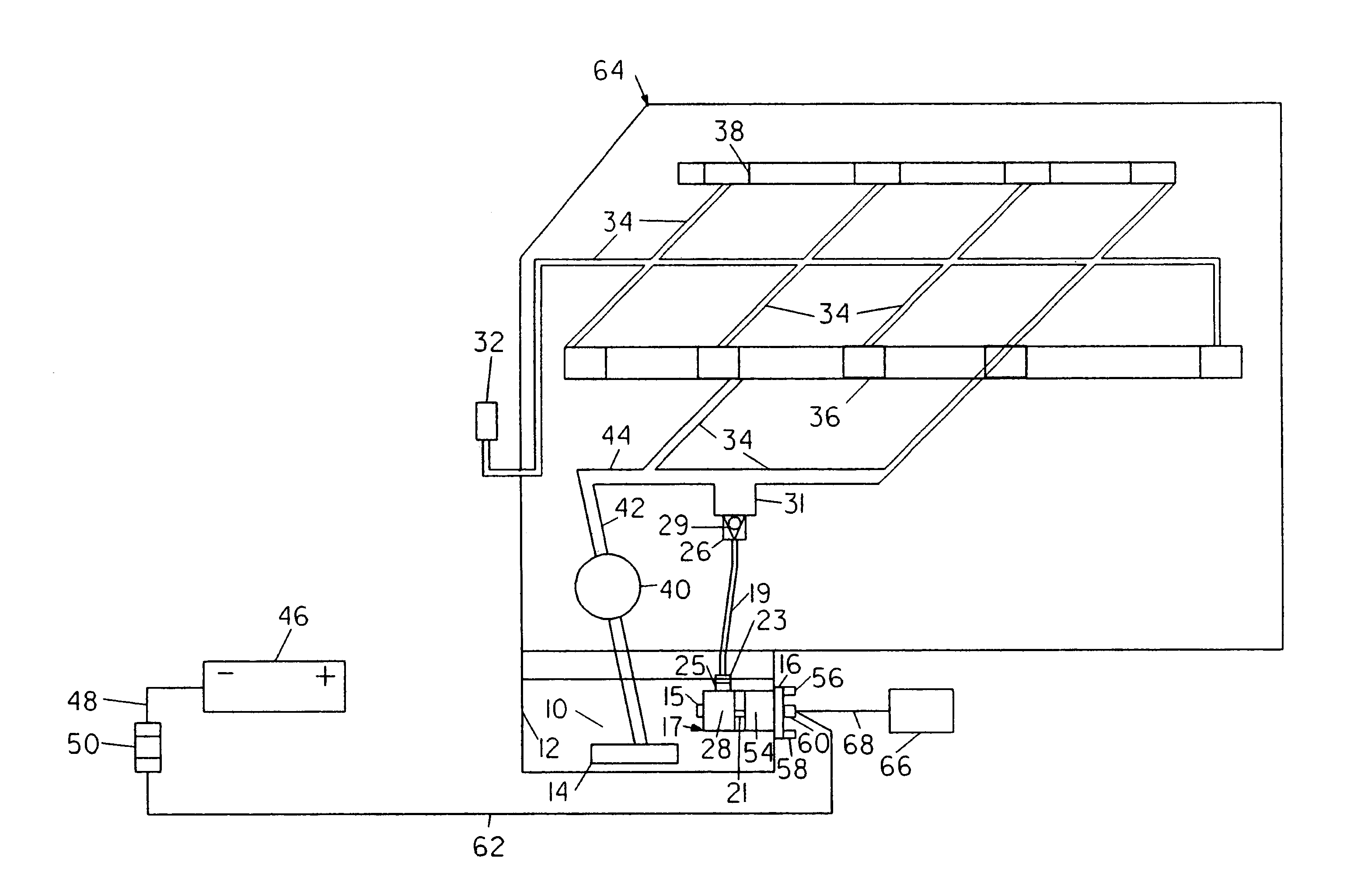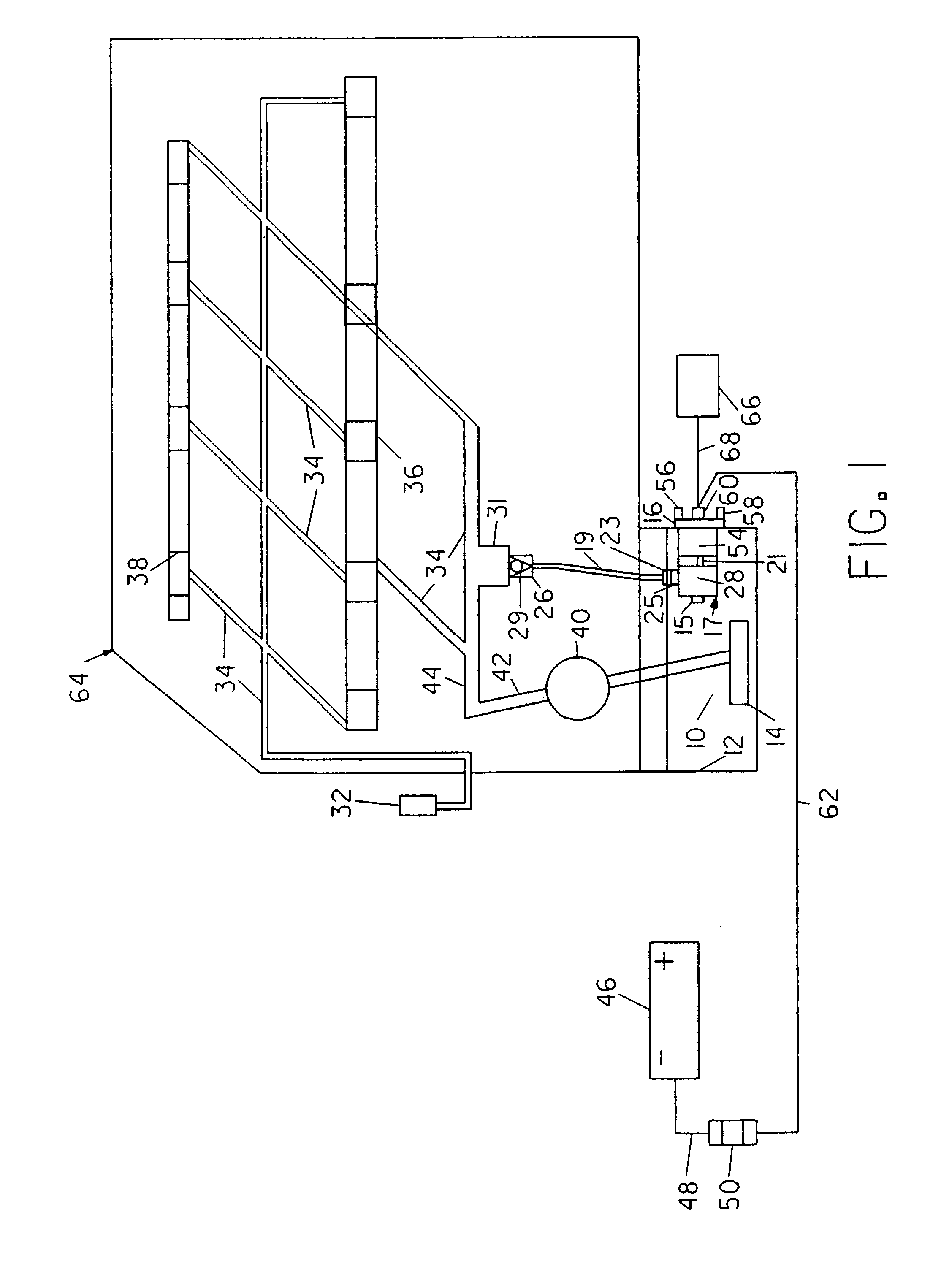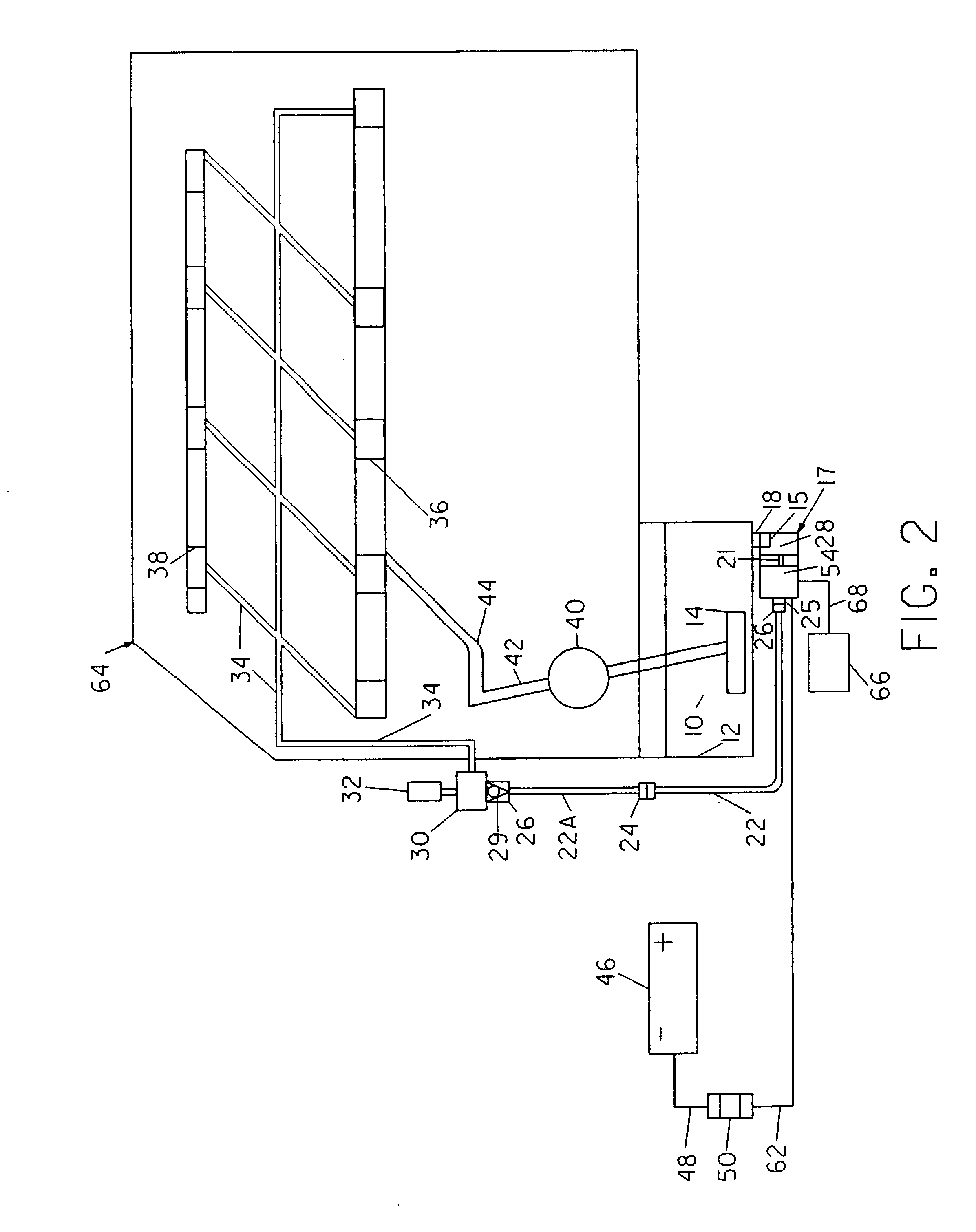Method and apparatus for reducing wear in an internal combustion engine
a technology for internal combustion engines and wear reduction, which is applied in the direction of lubricant mounting/connection, lubrication indication devices, lubricant elements, etc., can solve the problems of substantial wear in engines, required operator action, and inability to achieve the effect of lubrication immediately
- Summary
- Abstract
- Description
- Claims
- Application Information
AI Technical Summary
Problems solved by technology
Method used
Image
Examples
second embodiment
Now referring to FIG. 2, this second embodiment departs from the most preferred embodiment by having the timed pump 17, connected immediately outside of oil pan 12. Hydraulic pump 28 inlet 15 is directly connected to oil pan 12 through a modified drain plug 18. Of course, the inlet 15 can be shaped to mate directly to oil sump 12 but it is shown with plug 18 for completeness. The timed pump 17 operates exactly in the same method as described for the preferred embodiment for frequency and duration of operation in FIG. 1. Timed pump 17 is also connected to remote operator 66 through control wire for remote operation 68, and timed pump 17 is also connected to the battery as shown in FIG. 1. Now referring back to FIG. 2, hydraulic pump outlet 25 is connected through hydraulic connector 26 to a hydraulic hose or hydraulic line 22, which in turn is connected to a multiposition valve, or three-way hydraulic valve 24. Still referring to FIG. 2, three-way hydraulic valve 24 allows for mutual...
third embodiment
Now referring to FIG. 3, this third embodiment departs from the preferred in that it does not have and integrated pump and controller, but that the electronic controller 54 is remote from hydraulic pump 28. Electronic controller 54 is electrically connected to hydraulic pump 28 by means of electrical control wire harness 21. The method of operation is identical to the one disclosed in FIG. 1 and FIG. 2, but connection to engine block is the same as FIG. 2
fourth embodiment
Now referring to FIG. 4, this fourth embodiment shows another schematic of connection and description of another embodiment of my automatic method and apparatus for reducing wear in an internal combustion engine. Lubricating oil 10 contained in oil sump 12, is allowed to flow through a hydraulic coupling 20 to allow evacuation of lubricating oil 10 from oil sump 12 and flow through a hydraulic fluid line or hose 22B. Hydraulic fluid line 22B is connected to a quick disconnect hydraulic coupling 27, which is connected to hydraulic line 22C. Part 22C is connected to hydraulic connector 26 and this is connected to pump inlet 15 of hydraulic pump 28. Hydraulic pump 28 outlet 25 is connected to hydraulic line 22D by hydraulic connector 26. Hydraulic line 22D is connected to a three-way hydraulic valve 24. From valve 24, embodiment of FIG.4 is identical in the description of connection to the engine block as the one disclosed in FIG. 2 embodiment and can also use the connection method of ...
PUM
 Login to view more
Login to view more Abstract
Description
Claims
Application Information
 Login to view more
Login to view more - R&D Engineer
- R&D Manager
- IP Professional
- Industry Leading Data Capabilities
- Powerful AI technology
- Patent DNA Extraction
Browse by: Latest US Patents, China's latest patents, Technical Efficacy Thesaurus, Application Domain, Technology Topic.
© 2024 PatSnap. All rights reserved.Legal|Privacy policy|Modern Slavery Act Transparency Statement|Sitemap



